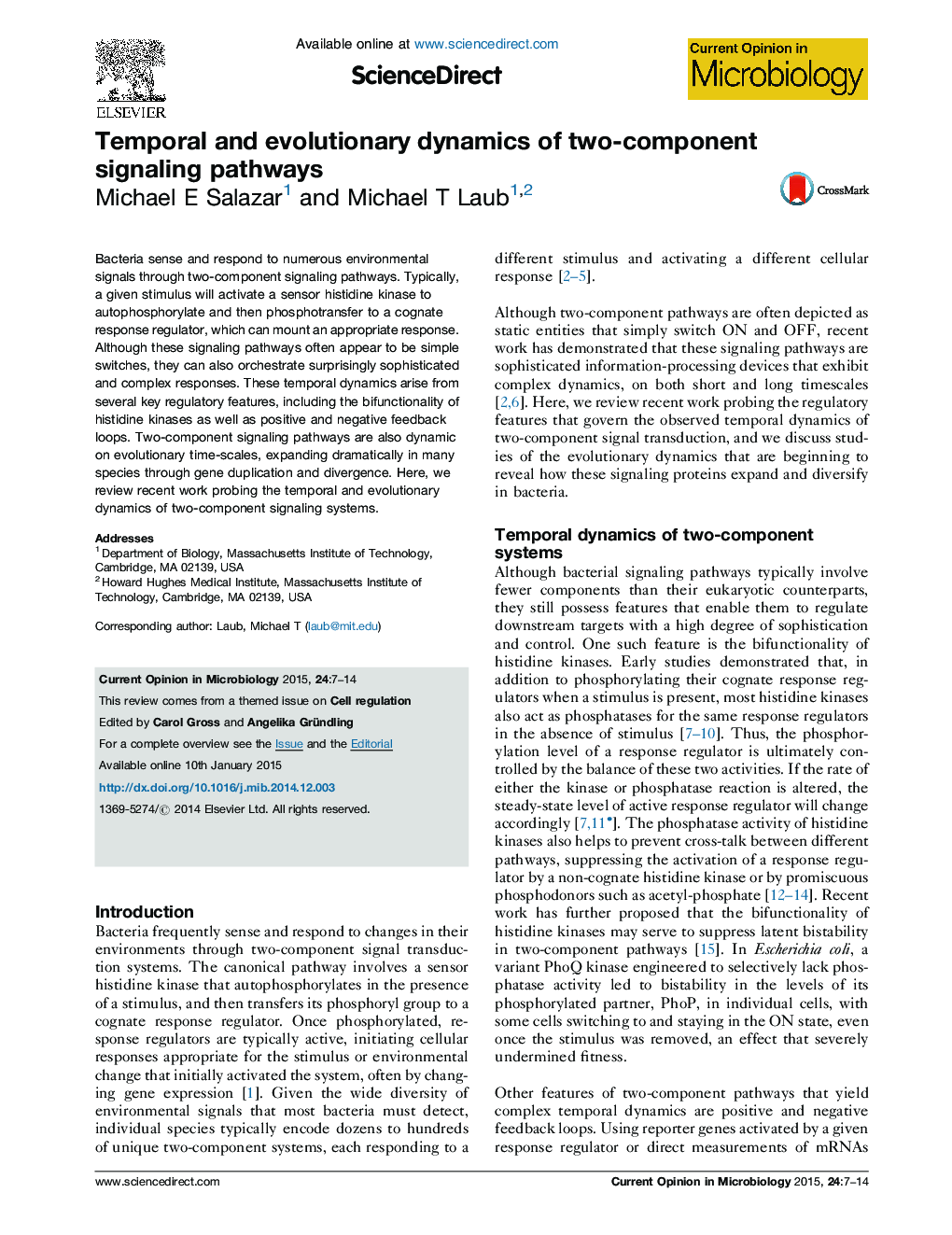| Article ID | Journal | Published Year | Pages | File Type |
|---|---|---|---|---|
| 3399046 | Current Opinion in Microbiology | 2015 | 8 Pages |
•Kinase bifunctionality and feedback loops produce complex temporal dynamics.•Many two-component pathways exhibit partial adaptation or pulsing behavior.•Phosphotransfer specificity is determined largely by molecular recognition.•Specificity residues must coevolve to insulate pathways post-duplication.•How phosphorelays evolve from canonical two-component systems is unclear.
Bacteria sense and respond to numerous environmental signals through two-component signaling pathways. Typically, a given stimulus will activate a sensor histidine kinase to autophosphorylate and then phosphotransfer to a cognate response regulator, which can mount an appropriate response. Although these signaling pathways often appear to be simple switches, they can also orchestrate surprisingly sophisticated and complex responses. These temporal dynamics arise from several key regulatory features, including the bifunctionality of histidine kinases as well as positive and negative feedback loops. Two-component signaling pathways are also dynamic on evolutionary time-scales, expanding dramatically in many species through gene duplication and divergence. Here, we review recent work probing the temporal and evolutionary dynamics of two-component signaling systems.
Graphical abstractFigure optionsDownload full-size imageDownload high-quality image (163 K)Download as PowerPoint slide
